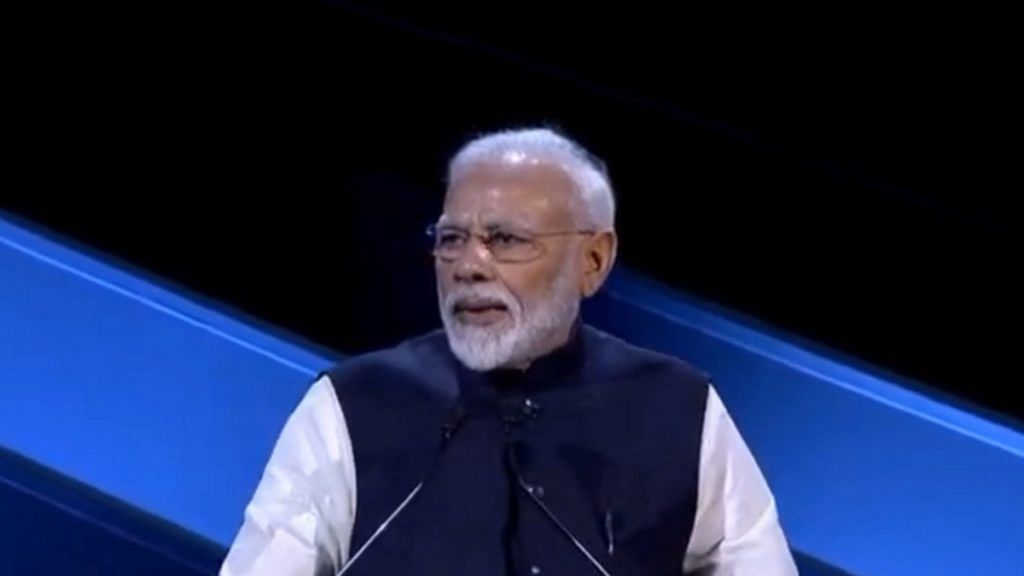New Delhi: A review of the foreign direct investment (FDI) policy, to check the need for further liberalisation in key sectors, and identifying key projects to be financed under the National Investment and Infrastructure Fund are among the slew of measures planned by the Modi government to meet its $5 trillion economy goal by 2024, ThePrint has learnt.
In a meeting of the Cabinet Committee on Investment and Growth held December-end, plans to revisit the strict RERA norms for real estate companies, particularly for small and medium real estate companies, were also discussed, highly-placed sources told ThePrint.
A senior government official said the committee also deliberated on a roadmap for scaling up investment in crucial sectors, such as agriculture, manufacturing, infrastructure as well as energy and mining.
“All relevant ministries have been asked to prepare proposals that would be subsequently presented before the committee,” the official said.
The committee is headed by Prime Minister Narendra Modi and has four other members — Home Minister Amit Shah, Highways and MSME Minister Nitin Gadkari, Finance Minister Nirmala Sitharaman and Commerce & Railways Minister Piyush Goyal.
Sitharaman, while presenting the budget last year, said the Modi 2.0 cabinet is all about making India a $5 trillion economy by 2024. Since then, the $5 trillion economy promise has dominated both Modi and his cabinet ministers’ discourses.
In her budget speech this year, Sitharaman announced steps as part of the government’s efforts at achieving the $5-trillion target.
She announced steps to ensure adequate funding to infrastructure, including setting up a fund to accelerate investments in the sector. She also promised steps to remove roadblocks for investors and to promote India as a hub of electronic manufacturing.
For the rural economy, the budget announced steps to provide better warehousing facilities as well as steps to promote fisheries, dairy farming and horticulture besides traditional crops.
But the Indian economy is projected to grow at only 5 per cent in 2019-20 and at 6 per cent in 2020-21, much lower than the growth rates required to achieve a $5 trillion economy by 2024.
For this, the nominal GDP has to grow at a rate of 12 per cent annually beginning 2019-20 or roughly a 8 per cent real growth rate along with 4 per cent inflation.
Economists predict that with the current growth rates, the nominal GDP growth will have to be more than 17 per cent annually for the three years between 2021-22 and 2023-24.
Also read: Nirmala Sitharaman says green shoots visible in Indian economy, RBI measures will help too
The infrastructure push
One of the sectors that the Modi government has been concentrating on is infrastructure.
The government’s push in this sector was evident last year when Sitharaman unveiled Rs 102 lakh crore of infrastructure projects, under the National Infrastructure Pipeline, to be implemented in the next five years.
A source privy to the talks at the cabinet committee said it was also discussed that the ministries would have to finalise plans for investing the Rs 100 lakh crore over the next five years.
The source told ThePrint that other measures discussed include revisiting the Non-Performing Assets (NPA) norms in a bid to encourage the growth of the MSME sector. The RBI had announced a restructuring of MSME accounts, in a bid to provide relief to the stressed sector.
“All ministries have been told to put a concerted effort on meeting this target and specific proposals to boost economic growth and development by ensuring greater credit flow to certain sectors, greater capital inflows and reforms of specific sectors will be discussed in the months to come,” the source said.
Also read: Why home, auto loans will become cheaper even though RBI hasn’t cut interest rates
Other measures
Minimising leakages by ensuring that subsidies are largely transferred through Direct Benefit Transfer (DBT), reducing “wasteful” expenditure in all ministries by 20 per cent, filling up vacancies across departments in a time-bound manner and reducing imports of non-essential goods, were also discussed in the meeting.
These measures would be overseen by the Department of Expenditure in the Ministry of Finance, the Department of Personnel and Training and the commerce ministry, sources said.
The DBT involves transferring the subsidy amount and other benefits directly to the bank accounts of the beneficiaries.
The sources added that the current state of the Indian economy, challenges and measures for improving economic growth and creating jobs were also discussed in the meeting.
Also read: Modi govt has tried to stimulate economy without creating future crisis: Expenditure Secy
